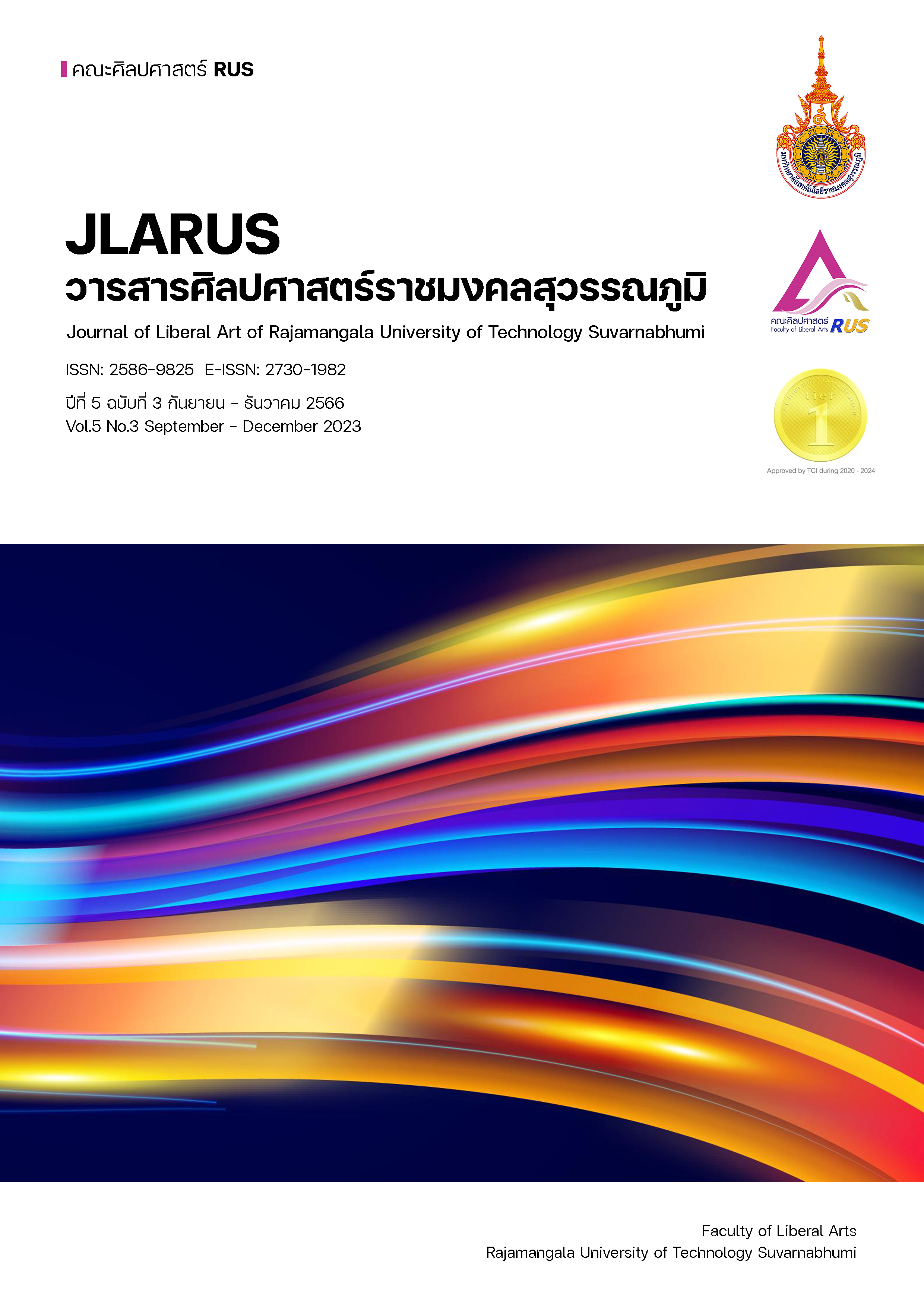THE DEVELOPMENT OF CREATIVE THINKING AND TEAMWORK AND COLLABORATION COMPETENCY FOR GRADE 11 STUDENTS USING PROJECT–BASED LEARNING WITH FLIPPED CLASSROOM
Main Article Content
Abstract
This article aimed to 1) develop grade 11 students’ creative thinking using project-based learning integrated flipped classroom, standardizing at least 80 percent of students conform to the standard of 80 or above, and 2) develop grade 11 students’ collaboration and teamwork using project-based learning management integrated flipped classroom, standardizing at least 80 percent of students conform to the standard of 80 or above. The target group was 45 students in the eleventh-grade 5/1 classroom, at Phukhieo School. This research was action research. The research tools were lesson plans, the learning management record form, an observation form for the learning management behavior of the students, a creative thinking assessment in the final stage, and a teamwork and collaboration assessment in the final stage. A creative thinking and a teamwork and collaboration assessment were analyzed quantitatively using the mean, standard deviation, and percentage for qualitative data. The data was analyzed by using content analysis. The research results were: 1) The students had the skill of creative thinking at 85 percent, and the students passed the criteria, accounting for 93.33 percent, which is in accordance with the standard criteria. 2) The students had a teamwork and collaboration competency at 85.65 percent; the students passed the criteria at 100 percent in accordance with the standard criteria.
Article Details

This work is licensed under a Creative Commons Attribution-NonCommercial-NoDerivatives 4.0 International License.
References
กระทรวงศึกษาธิการ.(2551). หลักสูตรแกนกลางการศึกษาขั้นพื้นฐาน พุทธศักราช 2551. กรุงเทพมหานคร: กระทรวงศึกษาธิการ.
กาญจนา วิชญาปกรณ์ และทรงภพ ขุนมธุรส. (2566). การใช้วิธีสอนแบบโครงการในรายวิชาคติชนวิทยากับการสอนภาษาและวรรณกรรมไทย. วารสารศิลปศาสตร์ปริทัศน์, 18(1), น.111-128.
ชัยวัฒน์ สุทธิรัตน์. (2553). การจัดการเรียนรู้แนวใหม่.นนทบุรี: สหมิตรพริ้นติ้งแอนดพับลิสชิ่ง.
พิมพันธ์ เดชะคุปต์. (2553). การสอนคิดด้วยโครงงาน การเรียนการสอนแบบบูรณาการกรุงเทพมหานคร : จุฬาลงกรณ์มหาวิทยาลัย.
วุฒิชัย ภูดี. (2566). การพัฒนาสมรรถนะการรวมพลังทำงานเป็นทีมของผู้เรียน โดยใช้การจัดการเรียนรู้ตามแนวทางของสะเต็มศึกษาแบบ 6E ร่วมกับโมเดลเศรษฐกิจบีซีจี สำหรับนักเรียนชั้น มัธยมศึกษาปีที่ 1 โรงเรียนชุมชนบ้านคำพอกท่าดอกแก้ว. วารสารวิทยาศาสตร์และวิทยาศาสตร์ศึกษา (JSSE), 6(1), 105–119.
เวชฤทธิ์ อังกนะภัทรขจร. 2555. ครบเครื่องเรื่องควรรู้สำหรับครูคณิตศาสตร์ หลักสูตรการสอนและการวิจัย. กรุงเทพมหานคร: จรัลสนิทวงศ์การพิมพ์.
สุคนธ์ สินธพานนท์ และคณะ. (2562). หลากหลายวิธีสอนเพื่อพัฒนาคุณภาพเยาวชนไทย. กรุงเทพมหานคร: 9119 เทคนิคพริ้นติ้ง.
สำนักงานคณะกรรมการการศึกษาขั้นพื้นฐาน. (2554). แนวทางการจัดการเรียนรู้สู่ประชาคมอาเซียน. กรุงเทพมหานคร: โรงพิมพ์ชุมนุม สหกรณ์การเกษตรแห่งประเทศไทย.
สำนักงานเลขาธิการสภาการศึกษา. (2564).กรอบสมรรถนะหลักของผู้เรียนระดับการศึกษาขั้นพื้นฐาน.กรุงเทพมหานคร: กระทรวงศึกษาธิการ.
สำนักงานเลขาธิการสภาการศึกษา. (2564). แนวทางการพัฒนาสมรรถนะผู้เรียนระดับการศึกษาขั้นพื้นฐาน. กรุงเทพมหานคร: กระทรวงศึกษาธิการ.
อัญญาณี มุ่งพิงกลาง และดนิตา ดวงวิไล. (2562). การพัฒนาผลสัมฤทธิ์ทางการเรียนเรื่องชนิดของประโยคระดับชั้นมัธยมศึกษาปีที่ 2 โดยใช้การจัดการเรียนรู้แบบใช้โครงงานเป็นฐาน. สาขาวิชาภาษาไทย คณะศึกษาศาสตร์ มหาวิทยาลัยมหาสารคาม. วารสารนวัตกรรมการเรียนรู้, 5(1), น.85-95.
Bergmann, J. & Sams, A. (2012). Flip your classroom: Reach every student in every class every day. Eugene, OR: International Society for Technology in Education.
Guilford, J. P. (1950). Creativity. American Psychologist, 5, 444-454.
Harun, D. (2006). PROJECT-BASED LEARNING HANDBOOK “Educating the Millennial Learner”. Educational Technology Division, Ministry of Education. Malaysia.
Kemmis, S. & McTaggart, R. (1992). The Action Research Planner (3rd ed.). Geelong: Deakin University Press.


